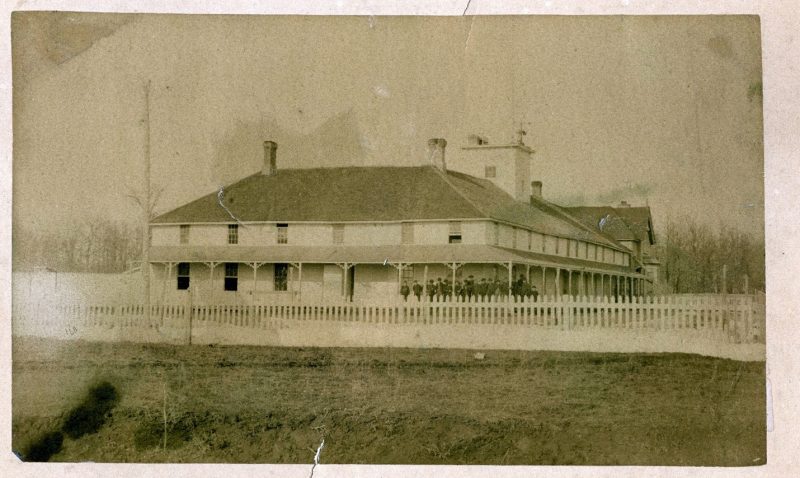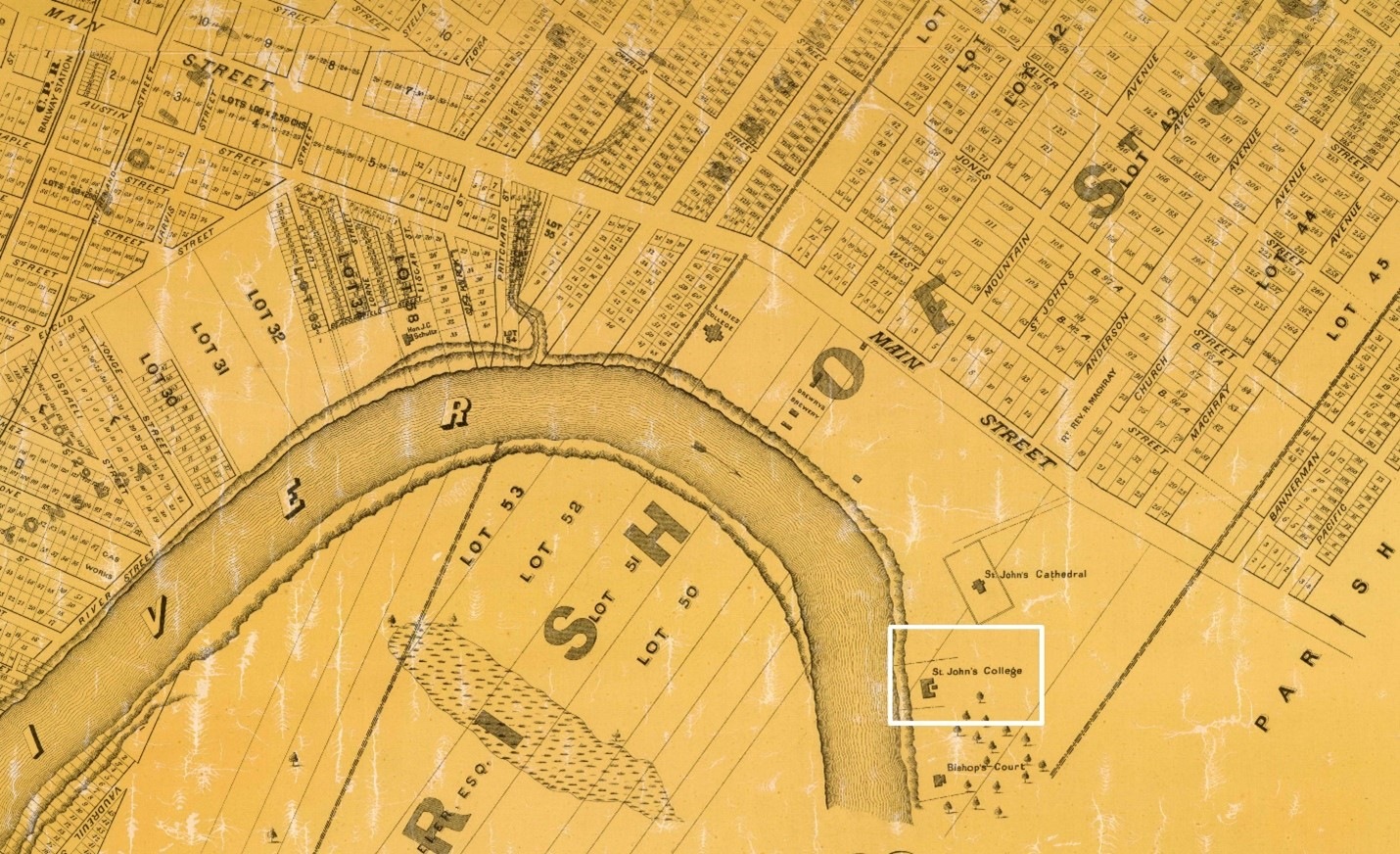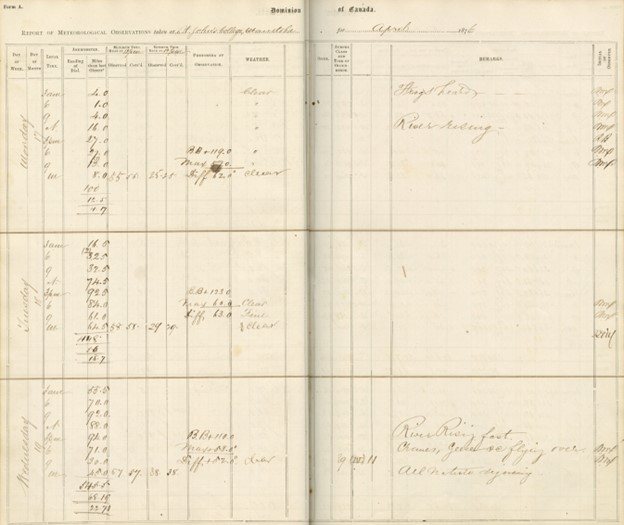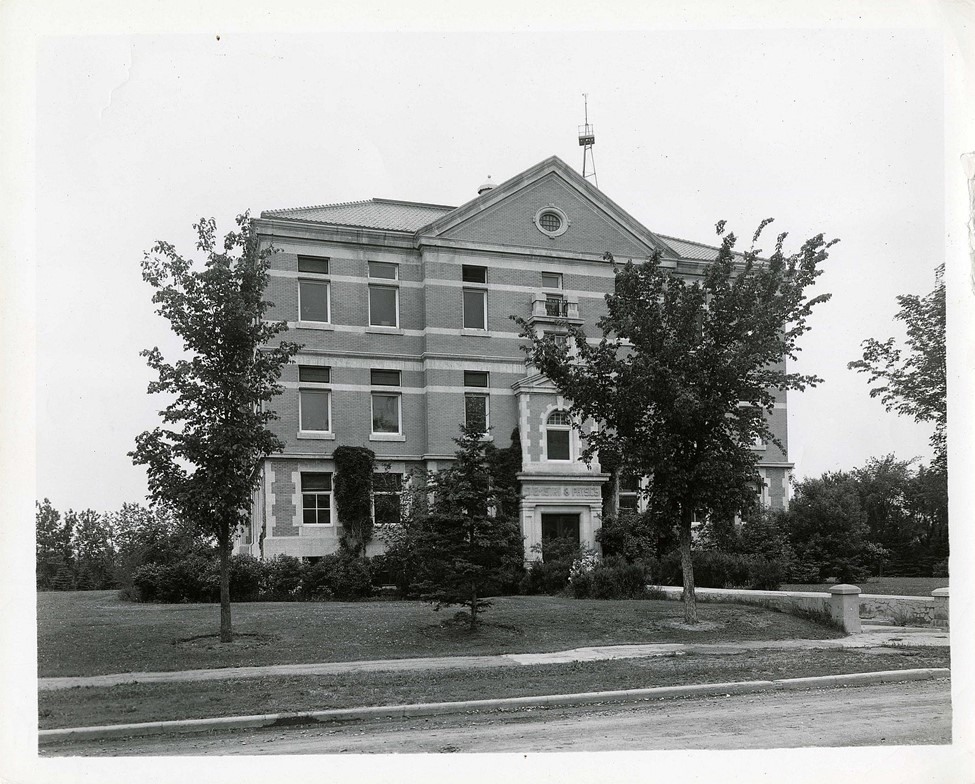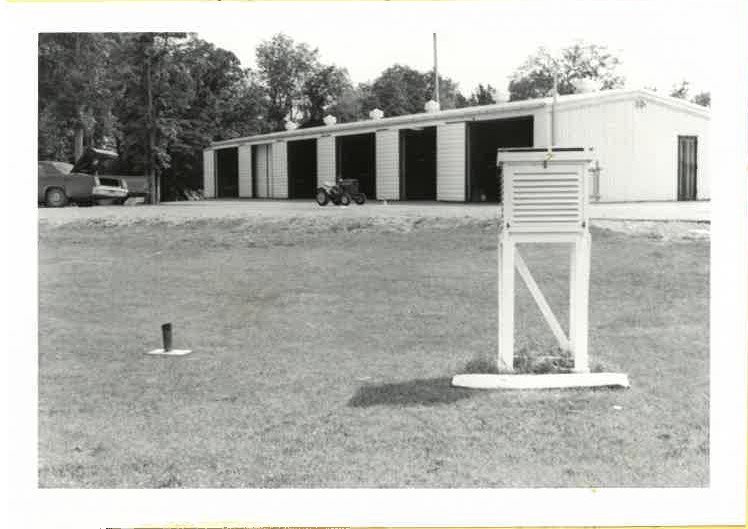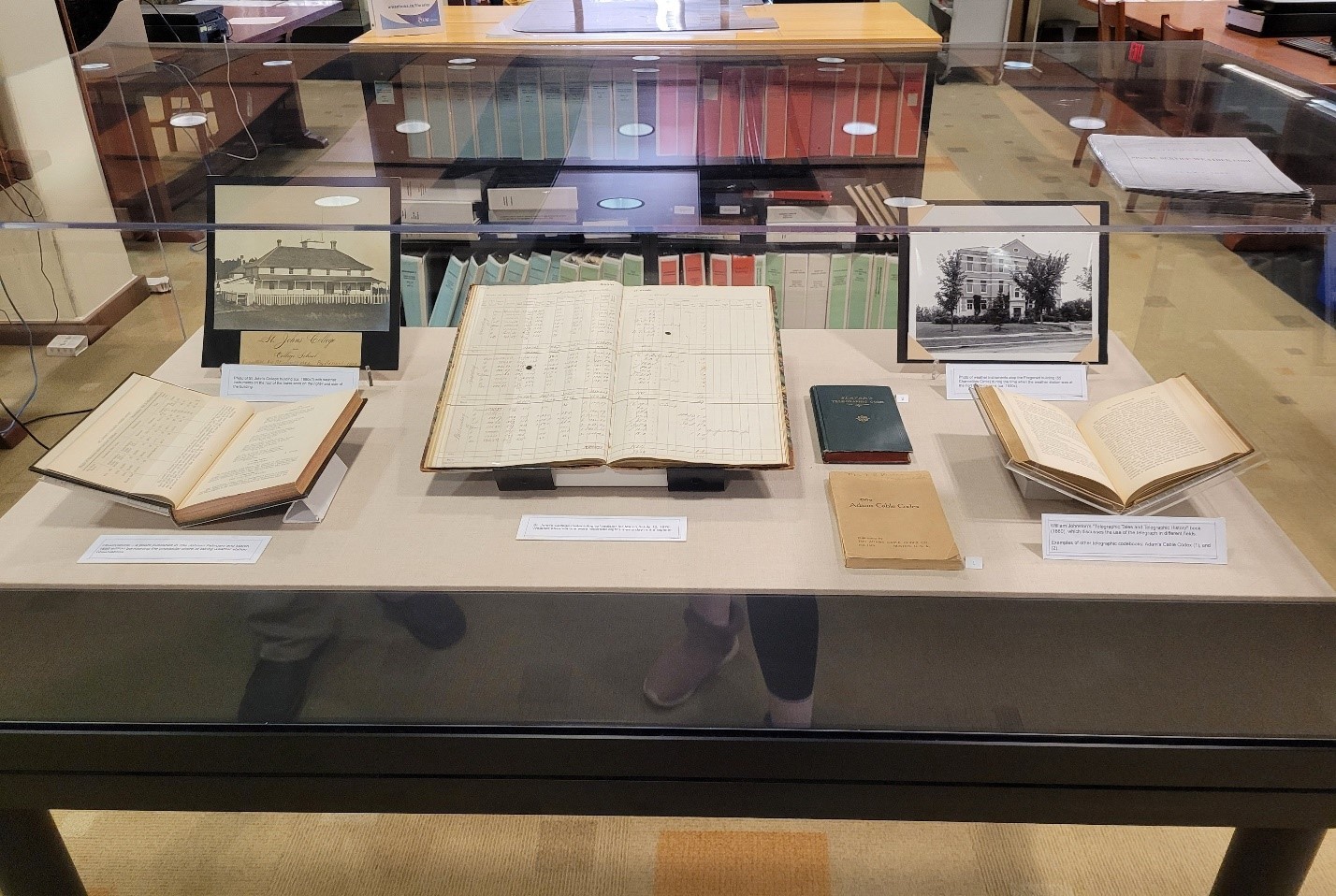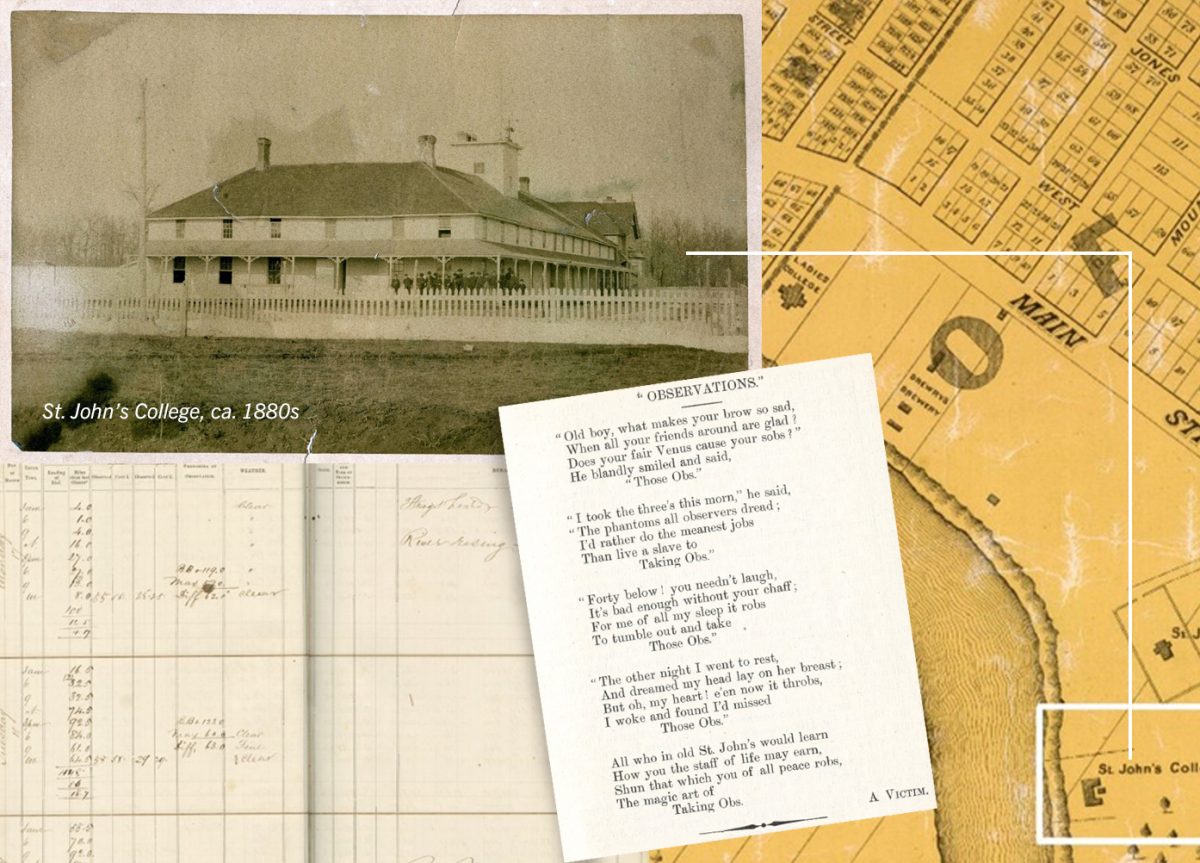
A collection of archived documents that relate to the history of weather observation at UM.
Taking “Obs”: A history of weather observing at UM
Learn about the history and origins of weather observing in Winnipeg from the 19th century with Clayton H. Riddell Faculty researchers, Wayne Chan and John Hanesiak.
Many Winnipeggers know that the city’s weather station of record is at the Winnipeg James Armstrong Richardson International Airport. What is not widely known is that the University of Manitoba was the home of Winnipeg’s official weather station for many decades.
Winnipeg’s Weather Station History
Canada’s meteorological service was founded in 1871, and a station was established in Winnipeg at St. John’s College in the same year. By 1873, Winnipeg had two official weather stations: St. John’s, one of the university’s founding colleges, was a Chief Station, which made eight observations daily. A second station, operated by James Stewart at his downtown drugstore, was a Reporting Telegraph Station, responsible for transmitting observations daily to Toronto and Washington, DC. In May 1882, the college assumed both roles, after Stewart’s resignation.
At the time, St. John’s College was located in the North End, on the shore of the Red River in the vicinity of St. John’s Cathedral. A meteorological observation tower was added to the river side of the building in 1874, and the college’s first anemometer (measuring wind speed and direction) was installed there. The instrument was dedicated to the memory of Margaret Macallum, whose father was the headmaster of the Red River Academy, the forerunner of St. John’s College. It bore the inscription: “In memory of Marie Margaret Macallum. This register of the winds, one of the latest triumphs of science and art, has been planted on her natal place, the earliest centre of civilization in this lonely and boundless land, by her bereaved mother and sister, MDCCCLXXIV”.
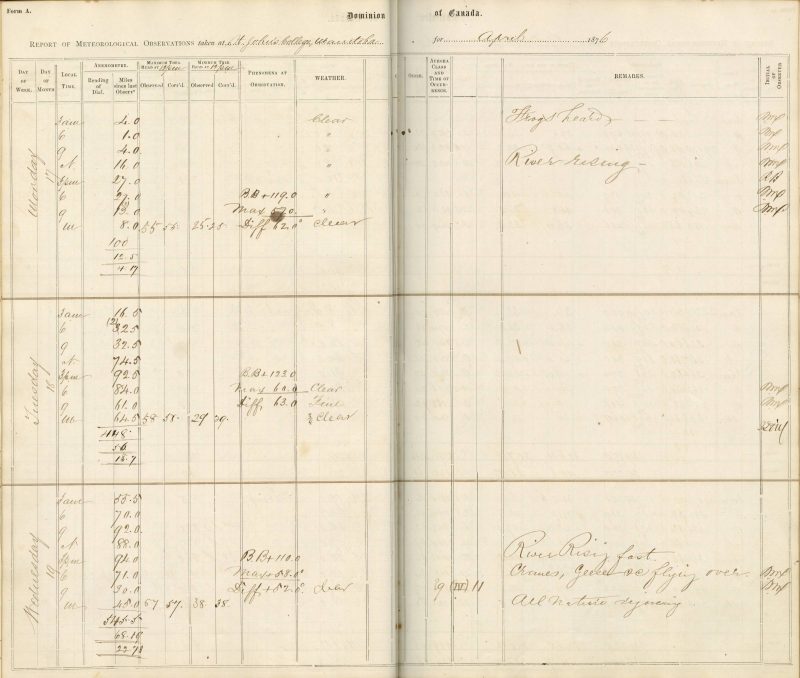
Page from St. John’s College meteorological register for April 1876. Note the comment for April 19 regarding the river rising and the appearance of geese and cranes. (Credit: Archives & Special Collections)
How Observing Worked
As a Chief Station, college staff or students had to take observations every three hours, day and night, and record them in a meteorological register. Three of these daily observations were telegraphed using a special weather code to Toronto and Washington, DC, the headquarters of the Canadian and American weather services, respectively, as there was a reciprocal agreement between the two nations to exchange weather information.
By the 1920s, the St. John’s weather station was in disrepair. An inspector commented that the instrument enclosure (Stevenson screen) was located near a playground and was subject to frequent tampering. The inspector witnessed firsthand people going up to it and shaking it “to pieces”. He noted dryly that “this was not conducive to good records”.
After observations at St. John’s College were discontinued in 1932, the official Winnipeg weather station was moved to the UM’s Fort Garry campus and located on the second floor of the Chemistry & Physics Building (now 55 Chancellors Circle), but its data is considered part of the St. John’s College climatological record. The station remained there until 1938, when it was moved to Stevenson Field (now the Winnipeg Richardson International Airport), where it continues to operate today.
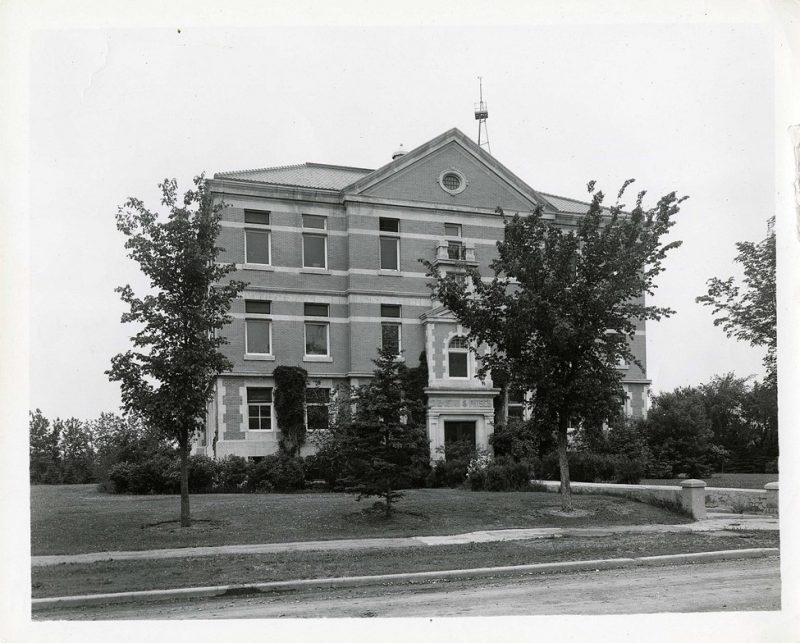
Location of weather station in the former Chemistry & Physics Building (55 Chancellors Circle), ca. 1930s. Note the anemometer on the roof. (Credit: Archives & Special Collections)
Another station may have operated on campus in the 1940s, but very little is known about it. The geographic coordinates provided by Environment and Climate Change Canada (ECCC) place it in Assiniboine Forest, which may be incorrect, as other metadata locates it at the Fort Garry campus. It appears to have been maintained by the Department of Soil Sciences and was perhaps related to the department’s research. At the request of the University of Manitoba, a government station was re-established at the Fort Garry campus in 1961 and operated until 1968. Located near 264C Freedman Crescent, it was probably installed to monitor weather conditions for the nearby experimental agricultural plots in the oxbow of the Red River (known as the Point Lands). A weather station operated by the Department of Plant Science since 1995 continues to be situated in the Point Lands.
Observing Weather on Campus Today
Although the university no longer hosts any official ECCC weather station, meteorological observations have continued at various times on campus. In addition to the station operated by Plant Science, the Centre for Earth Observation Science (CEOS) in the Department of Environment & Geography had a weather station and all-sky camera system atop the Wallace Building from 2004–2011.
Since then, a meteorological tower has been running at the Sea-ice Environmental Research Facility (SERF) in the Smartpark Innovation Hub, along with a targeted weather balloon program that began in 2013. If summer severe weather is possible, trained Atmospheric Science students will launch a balloon that provides vital atmospheric data for weather forecasters to assess the likelihood of severe storms in the Red River Valley. This balloon program is supported by UM researchers and ECCC.
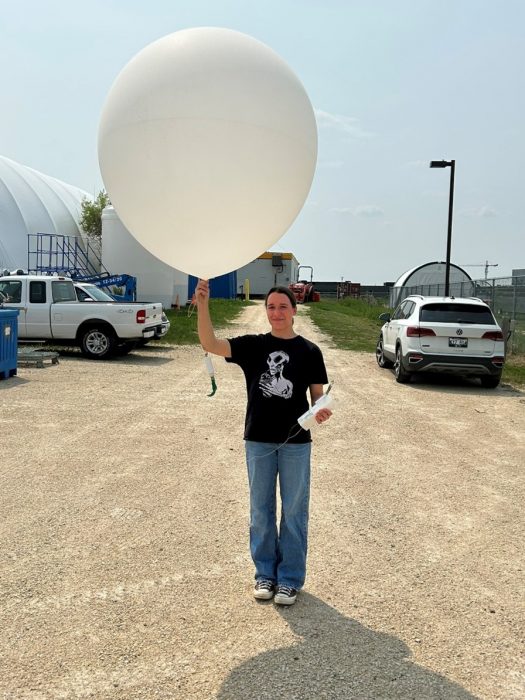
UM student Shayla Trippier launching a weather balloon at the Sea-ice Environmental Research Facility (SERF) in 2023. (Credit: John Hanesiak)
UM Archives & Special Collections has an original meteorological register from St. John’s College for 1876. It is currently on display in the Archives Reading Room as part of an exhibit related to the “Silk Dress Cryptogram”, a mysterious code found in a Victorian-era dress that was recently solved. The code turned out to be weather observations from 1888, one of which was from St. John’s College.
Additional Resources & Images
Link to “Breaking the Silk Dress Cryptogram” article: https://canwin-datahub.ad.umanitoba.ca/data/publication/breaking-silk-dress-cryptogram/resource/ed7d67d0-5563-4747-8a32-380fc413fda3







